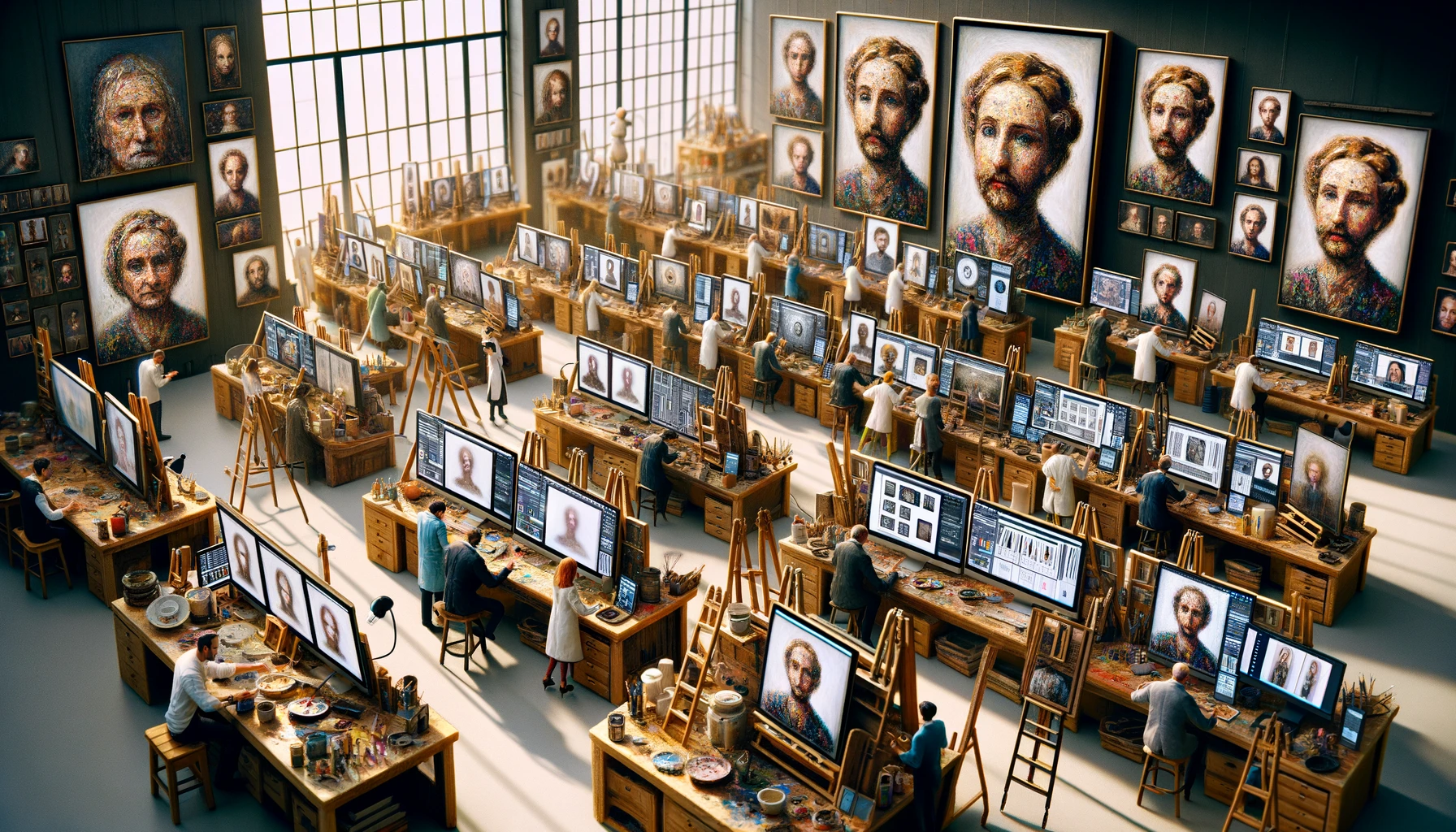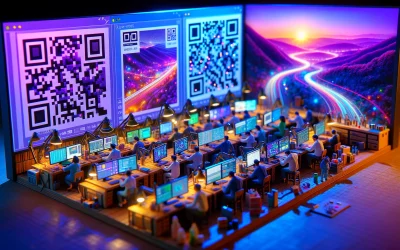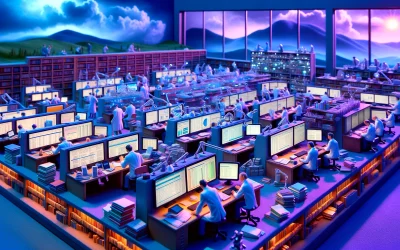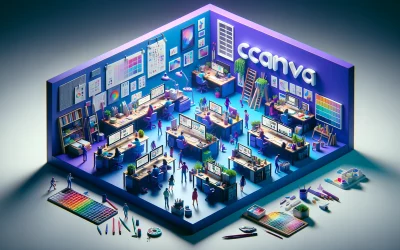AI portrait generators are becoming increasingly popular, with users looking to create unique portraits using AI technology. These generators use deep learning algorithms to produce realistic and anime-style portraits, making it easy to create portraits of girls, boys, and even pets. With so many AI portrait generators available, it can be difficult to know which one to choose.
To help users make an informed decision, this article will review the best AI portrait generators of 2024. Each generator will be tested and reviewed, with a focus on their features, functionality, and capabilities. Whether you are looking for an AI portrait generator to create a profile picture or a unique piece of art, this article will provide you with the information you need to make the right choice.
Understanding AI Portrait Generation
AI portrait generation is a process where artificial intelligence is used to create a portrait of a person. The technology behind AI portrait generation is based on deep learning algorithms that analyze a large number of images to learn how to create a portrait that looks like a real person.
The process of generating an AI portrait involves two steps: encoding and decoding. In the encoding step, the AI system analyzes the input image and extracts the essential features. These features are then transformed into a compact numerical representation known as a latent space vector. In the decoding step, the AI system generates a new image based on the latent space vector.
There are different types of AI portrait generators available in the market. Some generators create portraits in the style of famous artists like Van Gogh, Picasso, Leonardo da Vinci, and others. Others use deep learning algorithms to create a realistic portrait of a person.
AI portrait generation technology has come a long way in recent years and is being used in various industries, including art, entertainment, and advertising. It has made it possible for artists and designers to create unique and creative portraits with ease. Moreover, it has allowed individuals to create personalized portraits that reflect their personality and style.
Top AI Portrait Generators
Creating a portrait used to be a complicated and time-consuming process, but with the advent of AI portrait generators, anyone can create stunning portraits in a matter of minutes. Here are some of the top AI portrait generators available today.
DeepArt
DeepArt is one of the most popular AI portrait generators available today. It uses neural networks to create unique and beautiful portraits that are sure to impress. With DeepArt, users can upload their own photos and choose from a variety of styles to create a truly unique portrait. The process is simple and intuitive, making it easy for anyone to create a beautiful portrait in a matter of minutes.
PortraitAI
PortraitAI is another great AI portrait generator that uses advanced algorithms to create stunning portraits. With PortraitAI, users can upload their own photos and choose from a variety of styles to create a truly unique portrait. The AI technology used by PortraitAI is incredibly advanced, making it one of the most accurate and realistic portrait generators available today.
FaceApp
FaceApp is a popular app that uses AI technology to create stunning portraits. With FaceApp, users can upload their own photos and choose from a variety of styles to create a truly unique portrait. The app is incredibly easy to use, making it a great choice for anyone looking to create a beautiful portrait in a matter of minutes. Plus, with the ability to add makeup, change hair color, and even add a smile, FaceApp is one of the most versatile portrait generators available today.
Features to Look for in AI Portrait Generators
When choosing an AI portrait generator, there are several features to consider. Here are the top three features to look for:
Style Customization
One of the most important features to look for in an AI portrait generator is the ability to customize the style of the portrait. Some generators only offer a limited number of styles to choose from, while others allow for more creative freedom. Look for a generator that offers a wide range of styles, including realistic, cartoonish, and even styles that mimic the work of famous artists like Van Gogh or Picasso. This will allow you to create a portrait that truly reflects your unique style and personality.
Image Quality
Another important feature to consider is the image quality of the portraits generated by the AI. Look for a generator that produces high-quality images with sharp lines and vibrant colors. The image should be clear and well-defined, with no pixelation or blurring. This will ensure that your portrait looks professional and polished.
Ease of Use
Finally, consider the ease of use of the AI portrait generator. Look for a generator that is easy to navigate and understand, with clear instructions and a user-friendly interface. The generator should be intuitive and straightforward, with no complicated steps or confusing menus. This will save you time and frustration, allowing you to focus on creating the perfect portrait.
By considering these features, you can find an AI portrait generator that meets your needs and helps you create stunning portraits with ease.
How AI Portrait Generators Work
AI portrait generators use advanced algorithms to create a digital portrait of a person. Here are some key concepts that explain how these algorithms work.
Neural Networks and Machine Learning
AI portrait generators use neural networks and machine learning algorithms to analyze images of human faces and create a digital portrait. Neural networks are a type of machine learning algorithm that can learn from data. They consist of layers of interconnected nodes that can process and analyze information.
Training Data and Algorithms
To create an accurate digital portrait, AI portrait generators need to be trained on a large dataset of images. This dataset is used to train the neural network to recognize different features of human faces, such as the shape of the eyes, nose, and mouth.
The algorithms used in AI portrait generators are designed to analyze these features and create a digital portrait that accurately represents the person’s face. These algorithms can also apply different styles and effects to the portrait, such as changing the lighting or adding artistic effects.
Image Rendering Techniques
Once the AI portrait generator has analyzed the person’s face and applied any desired styles or effects, it uses image rendering techniques to create a digital portrait. Image rendering is the process of creating a digital image from a set of instructions or data.
AI portrait generators use a variety of image rendering techniques, such as ray tracing and rasterization, to create high-quality digital portraits. These techniques can create images that are realistic and detailed, with accurate lighting and shading.
In summary, AI portrait generators use neural networks and machine learning algorithms to analyze images of human faces, apply different styles and effects, and use image rendering techniques to create a digital portrait. These advanced algorithms can create high-quality digital portraits that accurately represent the person’s face.
Applications of AI Portrait Generators
AI portrait generators have a wide range of applications, from personal use to professional and educational use. Here, we will explore some of the most common applications of AI portrait generators.
Personal Use
AI portrait generators are a fun and creative way to enhance personal photos. With AI portrait generators, users can transform their photos into unique and artistic portraits that reflect their personality and style. These portraits can be used as profile pictures on social media, printed and framed as wall art, or simply shared with friends and family.
Professional Use
AI portrait generators can also be used by professionals in various fields. For example, photographers can use AI portrait generators to enhance their photos or create unique and artistic portraits for their clients. Graphic designers can use AI portrait generators to create illustrations or designs for various projects. Makeup artists can use AI portrait generators to experiment with different makeup looks and styles.
Educational Use
AI portrait generators can also be used in educational settings. For example, art students can use AI portrait generators to study different art styles and techniques. History students can use AI portrait generators to create portraits of historical figures. Science students can use AI portrait generators to create portraits of scientists or inventors.
Overall, AI portrait generators are a versatile tool that can be used for a variety of purposes. Whether for personal, professional, or educational use, AI portrait generators offer a fun and creative way to enhance photos and create unique and artistic portraits.
Ethical Considerations
When it comes to using AI portrait generators, there are several ethical considerations that need to be taken into account. In this section, we will discuss some of the most important ethical concerns related to AI portrait generators.
Privacy Concerns
One of the most significant ethical concerns related to AI portrait generators is privacy. Users need to be aware that their images may be stored and used for other purposes. It is important to ensure that the AI portrait generator service provider has a clear privacy policy that outlines how user data is collected, used, and stored. Users should also be given the option to delete their images from the system if they wish to do so.
Bias and Fairness
Another ethical consideration related to AI portrait generators is bias and fairness. AI algorithms can be biased, which can lead to unfair outcomes. For example, an AI portrait generator may be biased towards certain skin tones or facial features. To ensure fairness, AI portrait generator service providers need to ensure that their algorithms are unbiased and that they are regularly audited to identify and eliminate any biases.
Intellectual Property Rights
Intellectual property rights are another ethical consideration related to AI portrait generators. Users need to be aware that the images generated by AI portrait generators may be subject to copyright laws. It is important to ensure that the AI portrait generator service provider has obtained the necessary licenses and permissions to use the images generated by their algorithms. Users should also be aware of their own intellectual property rights and ensure that they are not infringing on the rights of others when using AI portrait generators.
In summary, AI portrait generators offer a lot of benefits, but there are also several ethical considerations that need to be taken into account. By being aware of these ethical concerns, users can ensure that they are using AI portrait generators in a responsible and ethical manner.
Future Trends in AI Portrait Generation
Technological Advancements
As technology continues to advance, so too will AI portrait generators. Machine learning algorithms will become more sophisticated and better at recognizing patterns in images. This will lead to more accurate and realistic portrait generation. Additionally, advancements in hardware will allow for faster processing speeds, enabling the generation of higher quality images in less time.
Increased Accessibility
As AI portrait generators become more popular, they will become more accessible to the general public. Currently, many of the best AI portrait generators are only available to professional artists or those with advanced technical skills. However, as the technology becomes more user-friendly, it will be easier for anyone to create their own AI-generated portraits.
Integration with Other Media
In the future, AI portrait generators will likely become more integrated with other forms of media. For example, AI-generated portraits could be used in video games or virtual reality experiences. They could also be used to create custom avatars for social media or online forums. As AI technology continues to advance, the possibilities for integration are endless.
Overall, the future of AI portrait generation looks bright. As technology continues to advance and become more accessible, we can expect to see increasingly realistic and creative portrait generation. With the integration of AI-generated portraits into other forms of media, we may even see a new era of digital art and entertainment.




